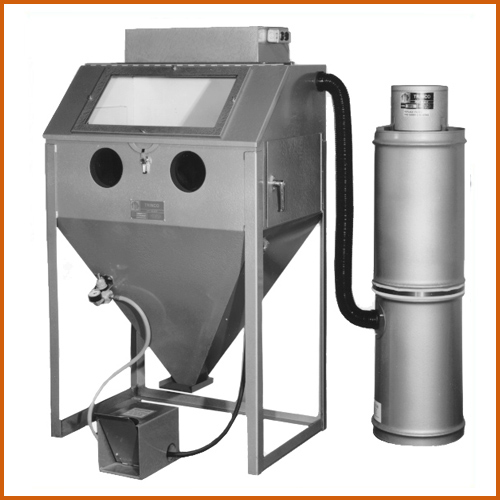
Operation manuals for Clemco blast machines, blast cabinets, and blast rooms. Also for personal protective equipment (PPE)/safety equipment and accessories.
Mac Blast Sandblaster Model 5 42x24 Bl Manual 2017
Sandblasting (also known as bead blasting, micro blasting, abrasive blasting, wetblasting/hydroblasting, and sodablasting) is the process of smoothing and/or cleaning a surface by forcing solid particles across the surface at high speeds using compressed air. There are several variants of the process, using various media; some are highly abrasive, whereas others are milder. The most abrasive are shot blasting (with metal shot) and sandblasting (with sand). Moderately abrasive variants include glass bead blasting (with glass beads) and media blasting with ground-up plastic stock or walnut shells and corncobs. Some of these substances can cause anaphylactic shock to both operators and passers by. A mild version is sodablasting (with baking soda). In addition, there are alternatives that are barely abrasive or nonabrasive, such as ice blasting and dry-ice blasting. The type of sandblasting media depends on the material it’s being used on.
Mac Blast Sandblaster Model 5 42 X 24 Bl Manual Download

Remington Model 5
Typically, there are two main types of sandblasters: Suction/Siphon blast systems and pressure blast systems (also known as sandblast machines or sandblast cabinets). And there are two main kinds—sandblasting cabinets and portable sandblasters. All variants have their specific uses. The main drawback in using abrasive blasting systems is the collection of the media used during the blasting process. For help with media collection, many units can be coupled with a dust collection system, used to gather the spent media for reuse.